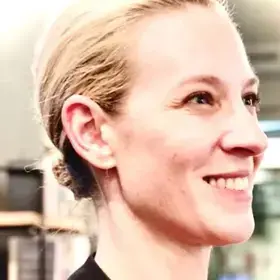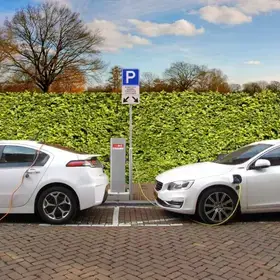By Dr. Steven Cohen, Senior Vice Dean, School of Professional Studies; Professor in the Practice of Public Affairs, School of International and Public Affairs
By any measure, our half-century effort at recycling has failed. Most of our waste is either landfilled or burned for energy. Very few of the materials we use are ever used again. Although recycling food waste shows promise and New York City’s effort at curbside pick-up will reduce some landfilling, people cannot be counted on to care about what happens to their garbage. Efforts to make people feel guilty for consuming are also doomed to failure and so if we going to build a real, operational, circular economy, we need to build it on a realistic model of human behavior. My view is that in the long run, single-stream waste will need to be sent to a waste mining facility that will utilize automation, robots, and artificial intelligence to sort waste and separate it for reuse. We will also need to design products more suitable for reuse than today’s electronics, clothing, and other consumer goods.
Building waste mining operations will require technology still under development, massive investments of capital, and facility siting politics that will be contentious and difficult. Yet, we have no real alternative. I am not saying we should stop reducing waste and recycling—and certainly, efforts to separate organic waste are well worth pursuing. But in the long run, we need a solution that is not based on human behavior but on automated systems. People want to get rid of their garbage but very few care where it goes. As the world’s population grows to its expected peak just south of ten billion people, and as the world’s poor benefit from economic development, our level of material consumption and waste will grow. Mining the planet will continue to get more expensive, as will the price of land for landfilling. The linear economy of production, consumption, and dumping waste is unsustainable. It needs to be replaced by a circular economy where products are designed for re-use and organic waste is utilized to manufacture fertilizer used to grow food that will someday once again end up as organic waste. Sewage must also be refined for reuse as fertilizer, and all this circularity must be powered by renewable energy. The challenge and opportunity of the planet’s garbage was studied recently by the United Nations Environment Programme (UNEP) in their “Beyond the Age of Waste: Turning Rubbish Into A Resource. According to UNEP:
“Municipal solid waste generation is predicted to grow from 2.3 billion tonnes in 2023 to 3.8 billion tonnes by 2050. In 2020, the global direct cost of waste management was an estimated USD 252 billion. When factoring in the hidden costs of pollution, poor health and climate change from poor waste disposal practices, the cost rises to USD 361 billion. Without urgent action on waste management, by 2050 this global annual cost could almost double to a staggering USD 640.3 billion. The report’s modelling shows that getting waste under control by taking waste prevention and management measures could limit net annual costs by 2050 to USD 270.2 billion. However, projections show that a circular economy model, where waste generation and economic growth are decoupled by adopting waste avoidance, sustainable business practices, and full waste management, could in fact lead to a full net gain of USD 108.5 billion per year.”
The circular economy model goes beyond waste mining and includes product design that makes discarded products more usable in new products. None of this will happen immediately, although there is a growing movement to design products that can fit into future product designs. That can further facilitate material reuse, but even where design is less enlightened, we can still make new products out of the old. As waste mining becomes price-competitive with mining the planet, we can expect it to grow. Some may be skeptical that waste mining will ever be competitive with traditional mining, but two factors make it feasible: The resources being mined are getting more expensive to mine as they become less plentiful and more difficult to access, and the environmental impact of mining creates clean-up costs and risks liability costs when environmental impacts damage people or property. Waste mining will require a public-private partnership since the raw material needed for waste mining is now largely collected by government. The goal should be to transform this expense for local government into a revenue stream or, at a minimum, a cost-neutral transaction.
Some of the technology needed for waste mining is already available, and in fact, Amazon, the “king of waste creation,” is investing in some of this technology. According to Heather Clancy of Green Biz:
“Amazon’s climate tech venture fund launched in 2020 with $2 billion to invest with companies developing potential solutions to its emissions reduction and environmental sustainability commitments. On Wednesday, it announced backing for its 25th venture, an early-stage, female-led San Francisco startup called Glacier that makes next-generation, AI-guided recycling robots. The Climate Pledge Fund and New Enterprise Associates are notable funders for Glacier’s $7.7 million round, which brings the company’s total raised to $13 million. Other investors in this batch include AlleyCorp, Overture VC and VSC Ventures. Amazon’s participation marks the second investment for its Female Founder Initiative, a dedicated pool of $53 million. Market revenue for recycling robots is forecast to reach more than $10 billion by 2030, as materials recovery facilities (MRFs) struggle with understaffing and the sheer volume of unique materials — nearly 300 million tons in 2018 for the U.S. alone — that they are expected to process.”
Amazon and Glacier are far from the only players in this emerging business. Other companies see the potential of AI and robotics in waste management. It requires a reconceptualization of waste from a substance to be “managed” to a resource with economic value. To do this, we need to overcome our very human aversion to garbage. No politician is ever interested in being known as the “garbage Mayor.” Mayors would rather use tax dollars for schools and swimming pools. As I wrote last June:
“…waste management is a political backwater, and no mayor ever wants to hold a press conference to cut the ribbon on a new waste transfer station or an anaerobic digester to process food waste. As I often say, most people assume all those green bags somehow magically get transported to solid waste heaven. They do not want a waste management facility of any kind sited near their home.”
Attracting public investment in a waste mining facility would not be easy. The politics of waste management is problematic. The materials must be collected and brought to a facility that no one wants to live next door to. Garbage smells bad, looks bad, and is only attractive to rats. No one wants to sit on their front porch watching the garbage trucks drive by. To transform waste management into waste mining, private companies will need to see the potential for profit. The revenue stream from waste mining could someday attract private investment, but investors would need to be sure that when profits emerge, politicians aren’t allowed to interrupt the flow of garbage to the facility. Waste mining facilities might logically be located at or near today’s landfills (since the landfills themselves might be mined), but siting a facility anywhere will not be easy. Side payments to communities will be necessary and expensive.
The other key point of managing garbage involves the design of products and the business model used by a manufacturer. Take, for example, the electric vehicle. One business model is to sell the entire vehicle to the consumer, including the battery, which the consumer needs to charge. When the vehicle’s use is over, the battery and all its toxic and rare earth elements are the consumer’s responsibility to discard. A second business model is that the battery belongs to the manufacturer and leased to the car owner, and instead of the consumer charging it, the battery is rapidly replaced by the manufacturer when it needs to be charged. Of course, the entire vehicle could be leased rather than sold. The “recaptured” vehicle could be designed for resource mining. In America, about 20% of our automobiles are leased rather than bought. Similarly, an office printer could be leased rather than sold, and at the end of its useful life, the company collects it and resumes possession. Under those circumstances, the manufacturer would be powerfully motivated to design a printer that could readily be remanufactured for leasing to another customer. Enlightened design and creative business models can keep manufactured goods out of the waste stream.
The key to building the circular economy is not consumer guilt or changed behavior but new business models, waste mining, and new technologies that enable the economy to transform waste into a resource. Developing the new technologies and business models will be undertaken by private companies. Building a waste mining business will be much more difficult. The capital cost of waste mining will be considerable, although the revenue stream created by waste mining could be used to fund the investment needed. The key imponderable is politics. We need public officials with vision and honesty to work with business leaders willing to engage in the risks required to build a totally new business.
Views and opinions expressed here are those of the authors, and do not necessarily reflect the official position of Columbia School of Professional Studies or Columbia University.
About the Program
The Columbia University M.S. in Sustainability Management program offered by the School of Professional Studies in partnership with the Climate School provides students cutting-edge policy and management tools they can use to help public and private organizations and governments address environmental impacts and risks, pollution control, and remediation to achieve sustainability. The program is customized for working professionals and is offered as both a full- and part-time course of study.



